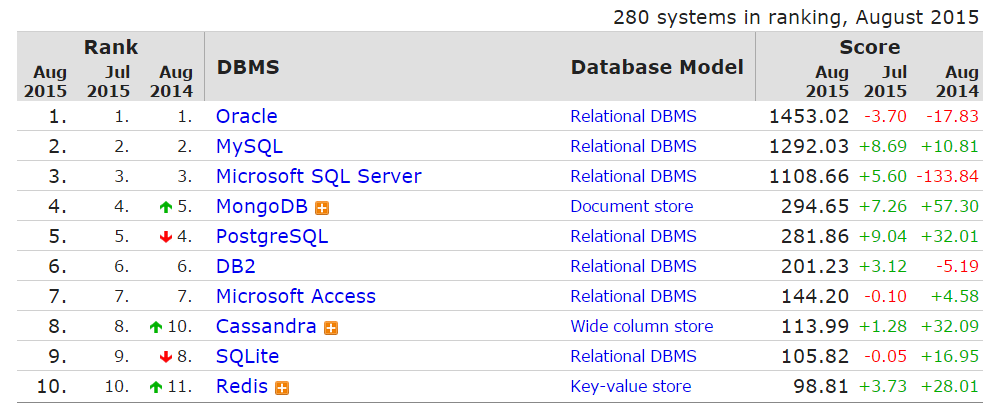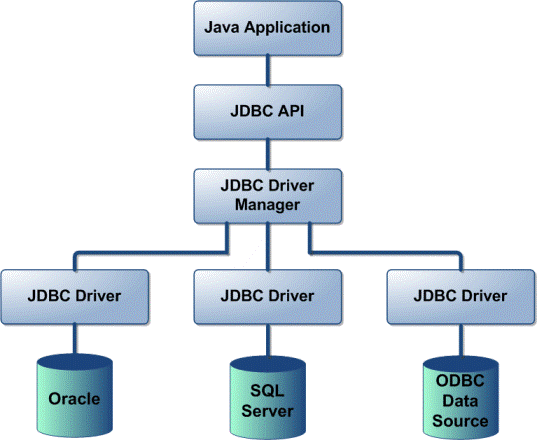JDBC Connection: Understanding the Important Role of Type 5 JDBC Drivers
Most web developers choose a preferred programming language and database management system to use for most, if not all, of their development projects. While they may choose to learn about other technologies along the way, they often stay loyal to their core technology choices for many years. This helps increase their level of knowledge about their chosen core technologies and allows them to work with greater efficiency.
This is one of the reasons Javascript has remained so popular as a programming language and Microsoft SQL Server consistently appears as one of the most used database management systems. These technologies are not only popular because it is convenient for developers to continue using them, they also offer a full range of capabilities. Additionally, they offer performance in their respective areas that is very competitive with other available options, and many times, they significantly outperform competitor technologies.

Image Source: db-engines.com
While the use of core technologies in the web development industry tends to remain relatively stable, that is not the case for other types of software or middleware.
Technologies that enhance or facilitate particular functions within a development project can change significantly. IT firms, as well as independent developers, are always looking for better tools to improve functionality, such as enhancing JDBC connections, improving scalability and many elements of application performance.
As a developer, having an effective set of tools and additional technologies at your disposal can dramatically improve the quality of your work. It can also help you achieve more in less time and offer the client or end user valuable benefits as well.
The Web Development Industry Evolves

Image Source: www.developersbook.com
Over the last decade, application development has significantly changed in many ways. Many of the changes allow developers and IT firms to utilize a range of new solutions, which increase the efficiency of the development process and help reduce expenses.
However, there are many moving parts within the development process and advancements in task-related technologies rarely move in a coordinated fashion. Challenges with using type 4 JDBC drivers for consistently creating fast, secure and scalable JDBC connections cleared a pathway for type 5 drivers to emerge, which offer significant advantages.
Type 4 JDBC Drivers Reach Their Limits
If properly set up, JDBC connections are ideal for Javascript and SQL Server projects that are data-driven and require industrial grade reliability. In many cases, type 4 drivers offer the best choice for overall JDBC architecture. However, more than a decade has come and gone since type 4 was initially unveiled, and recent advancements and innovation within the development space have surpassed the capabilities of type 4 drivers. Type 5 drivers address the shortcomings and limitations, providing a range of additional capabilities along with improved quality control.
Key Limitations of Type 4 JDBC Drivers
- Times for driver response unacceptable and unstable or when utilized in a runtime environment, ORM or an application server, data throughput performs poorly.
- VM consolitation ratios are substandard
- Inefficiencies such as needing to use DLLs in order to support particular database functions.
- Have to use several JARs if you have multiple database versions to support.
- Does not allow enhancement or optimization of vital applications without significant downtime involved.
- Requires writing and maintaining code specifically for each of the various data sources. Even using modern ORM models often require proprietary code if supporting BLOBs, XA and CLOBs.
The challenges listed above with using Type 4 drivers for JDBC are a direct result of several core technology industry advancements over the years. Dramatic improvements in virtual server capabilities, increases in data center consolidations and the advancements of applications supporting multiple databases all played a part in creating an environment that limits the usefulness of type 4 driver performance.
The Significance of Middleware for JDBC Connections

Image Source: blogs.msdn.com
Many project managers and support staff indirectly involved with the development process do not grasp the impact middleware has on application-to-data operations. In fact, other than facilitating connectivity, even some developers do not fully comprehend the depth of influence drivers have on overall performance.
JDBC drivers are not simply just another component involved in the success of application stacks, they are absolutely critical. The right type 5 driver directly facilitates success and provides dynamic enhancements with dramatic improvements in reliability.
Type 5: Critical Support, Dynamic Enhancements & Facilitating Stability
With several of the core limitations of type 4 drivers clearly defined above, one might wonder what a type 5 driver brings to the table that makes it so clearly convincing type 5 is the optimal choice? Well, the list of expanded capabilities and dramatic improvements in performance is pretty convincing in my opinion, here it is.
Unrestricted Performance and Stability
An enterprise grade type 5 driver offers almost completely unrestricted performance and is capable of extremely reliable data throughput performance without regard to the runtime environment or data access model. While there can be exceptions, many times, codeless enhancements are possible. You can almost completely disregard data access models and environments, with the ability to make key changes to application features and operations without any coding required.
Enhanced Efficiency and Control
A type 5 driver for JDBC connections also offers incredible efficiency of resources. You can fine tune applications use of resources and ensure they fit within bounds allowed by a specific environment. Data access functions can often consume elevated resource levels and sometimes developers forget to take the extra step of ensuring middleware resource efficiency before it creates a problem.
Simple deployment is made possible with the use of only one JAR file. There is no need for DLLs, client libraries, special considerations for Java environments or increased requirements for bulk data features. Additionally, type 5 drivers do not require proprietary extensions to support data sources, yet another significant degree of separation from type 4. Combining any number of the additional capabilities by using a type 5 driver results in a flexible JDBC connection solution that not only performs well, it allows developers to build-in scalability. Type 5 drivers provide scalable functionality without requiring additional time, resources and cost.
Meshing All the JDBC Connection Driver Facts Together
Take a moment to imagine you could possibly operate 8 virtual machines as opposed to 4, simply by applying a few setting adjustments in a type 5 JDBC driver. With the enhancements type 5 offers developers this scenario is very possible. Type 5 drivers can be designed in a number of ways and there are a number of type 5 products on the market, all with varying feature sets and tweaks depending on the developer.
It is easy to see how much more dynamic and powerful a type 5 driver is versus the type 4 model. In March, we just released our latest type 5 JDBC driver, JSQLConnect 8 –Type 5 JDBC Driver. If you have time, please take a minute to review the comprehensive list of features and powerful enhancements JSQLConnect 8 offers. We are very proud of the final version and offer a variety of licensing arrangements with a product support program as well. If nothing else, it will at least give you a clear picture of what current type 5 drivers are capable of delivering.
Download free trial